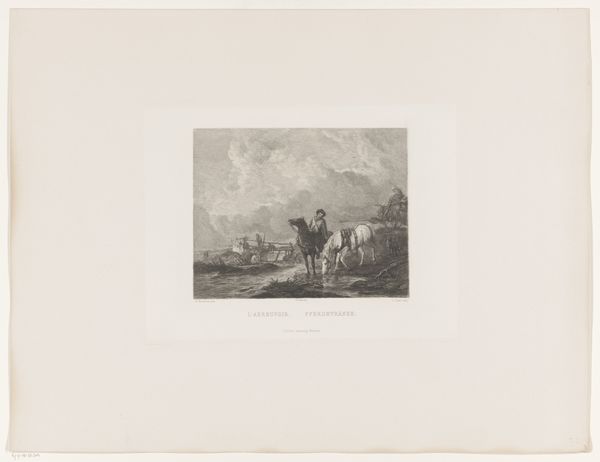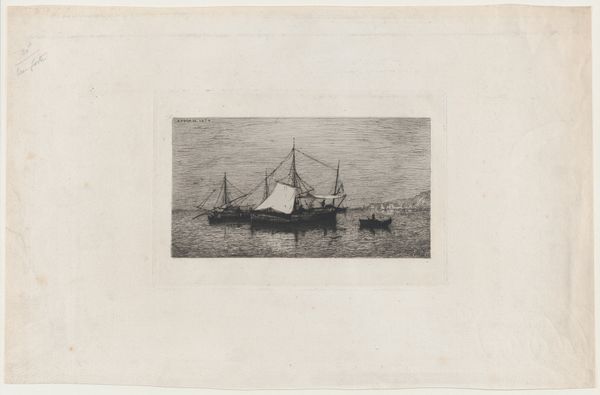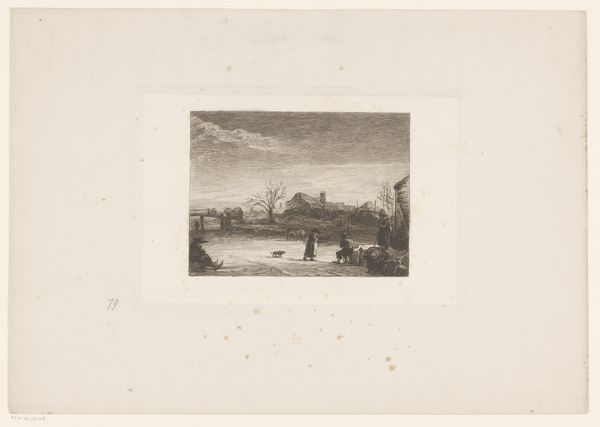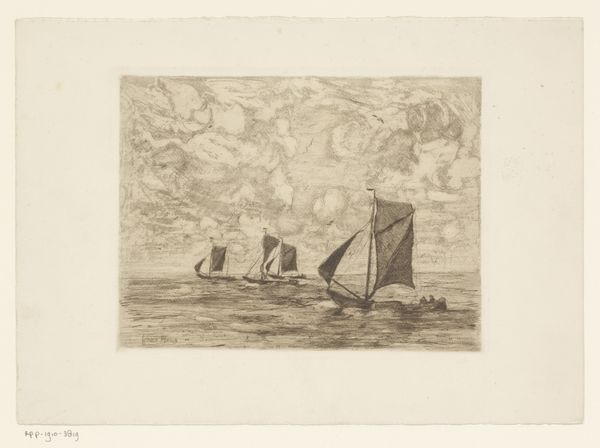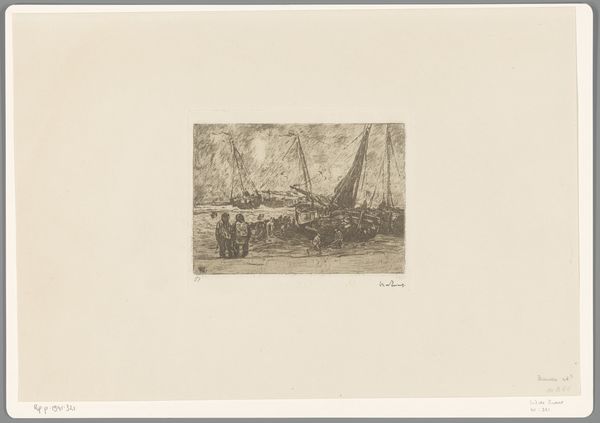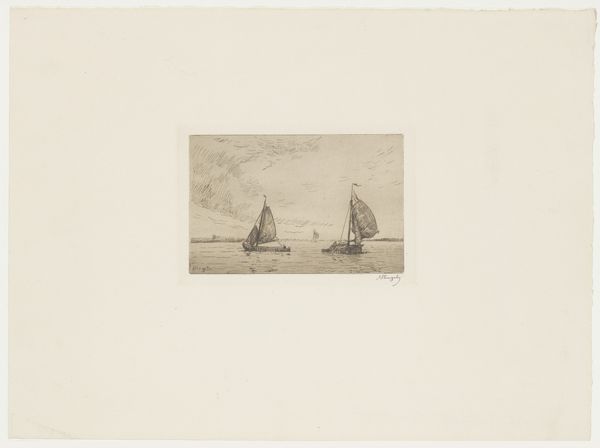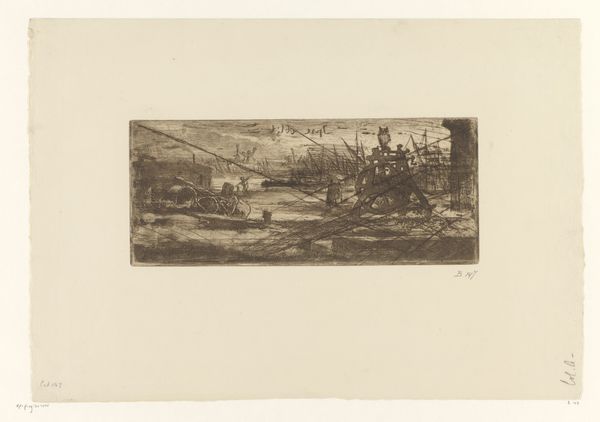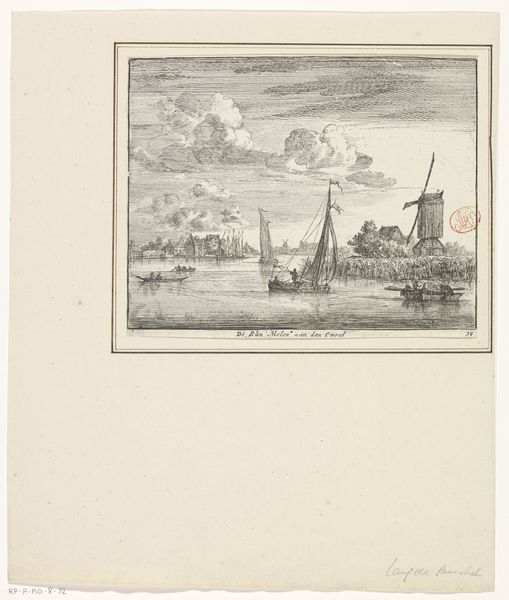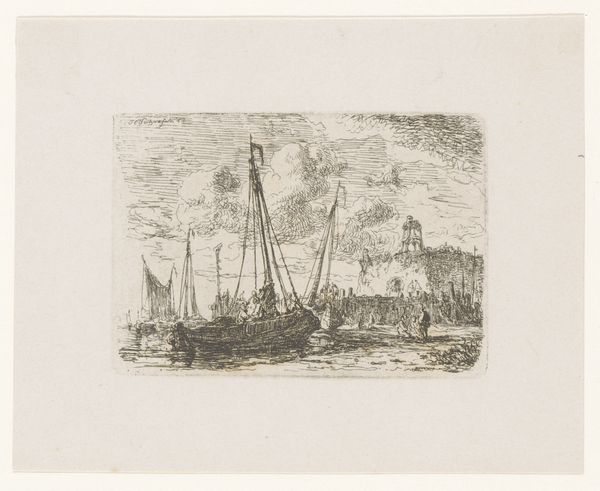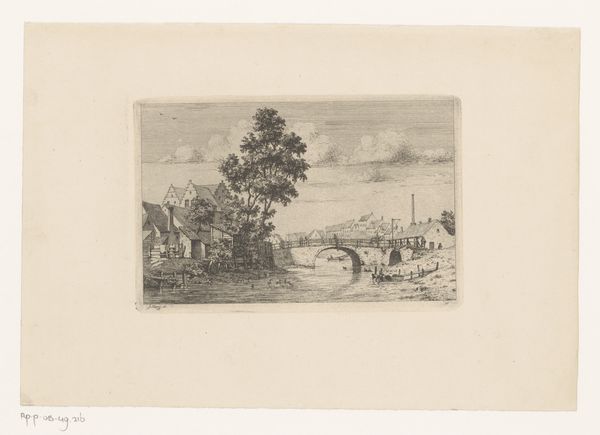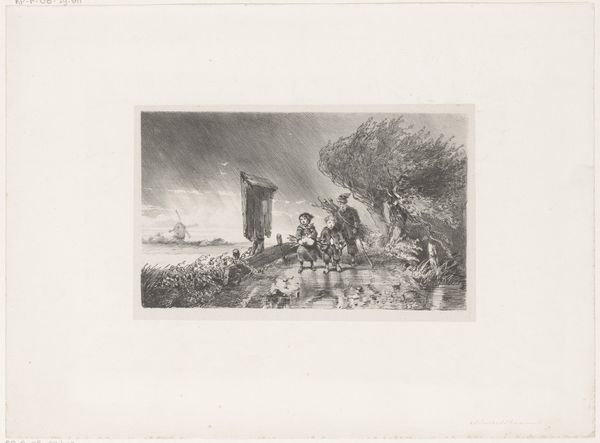
print, etching
# print
#
etching
#
landscape
#
etching
#
genre-painting
#
realism
Dimensions: height 104 mm, width 153 mm
Copyright: Rijks Museum: Open Domain
Curator: This etching by Henri François Schaefels, created in 1864, is titled "Steiger met half onttakeld schip en een sloep"—or "Jetty with Half-Dismantled Ship and a Sloop." Editor: The mood is melancholy, definitely. A large, damaged ship dominates the foreground, looming like a forgotten monument. The dense lines of the etching add to the feeling of decay. Curator: Absolutely. We need to understand that port cities, particularly during the 19th century, were centers of intense socio-economic activity, but also rife with social inequality and precarious labor conditions. The dismantling of the ship could be a reflection of this instability. It's important to examine it from that perspective. Editor: Right. And the realistic style only heightens that sense of lived reality. Note how the artist meticulously renders the texture of the wood, the tattered sails, the very palpable presence of manual labor near the jetty. These laborers—presumably male—are essential to how meaning is being made. Curator: Agreed. Gender and class intersect here. We see men undertaking arduous tasks that are so commonly marginalized in mainstream art histories. Yet, this scene invites contemplation about labor's socio-political implications in representing a period of naval decline. Editor: The inclusion of the church spire in the background is another interesting detail, hinting at the omnipresent power structures—church and state—overseeing these maritime activities and the lives intertwined with them. Curator: Precisely. The church looming over the scene represents institutions historically complicit in the exploitation of the working class, especially those connected to port economies, something not explicitly evident but still subtly critical. Editor: Thinking about art's role in depicting scenes from everyday life during this era makes Schaefels' realism particularly effective in drawing our attention to specific working class concerns and conditions, however veiled they may be. Curator: I’m glad we discussed that. Recognizing and recontextualizing such pieces, particularly through an intersectional and power-conscious lens, helps amplify the voices often unheard within traditional art narratives. Editor: This etching is a reminder of art’s potential in prompting a dialogue—it bridges the visual aesthetics with crucial conversations that resonate today.
Comments
No comments
Be the first to comment and join the conversation on the ultimate creative platform.
